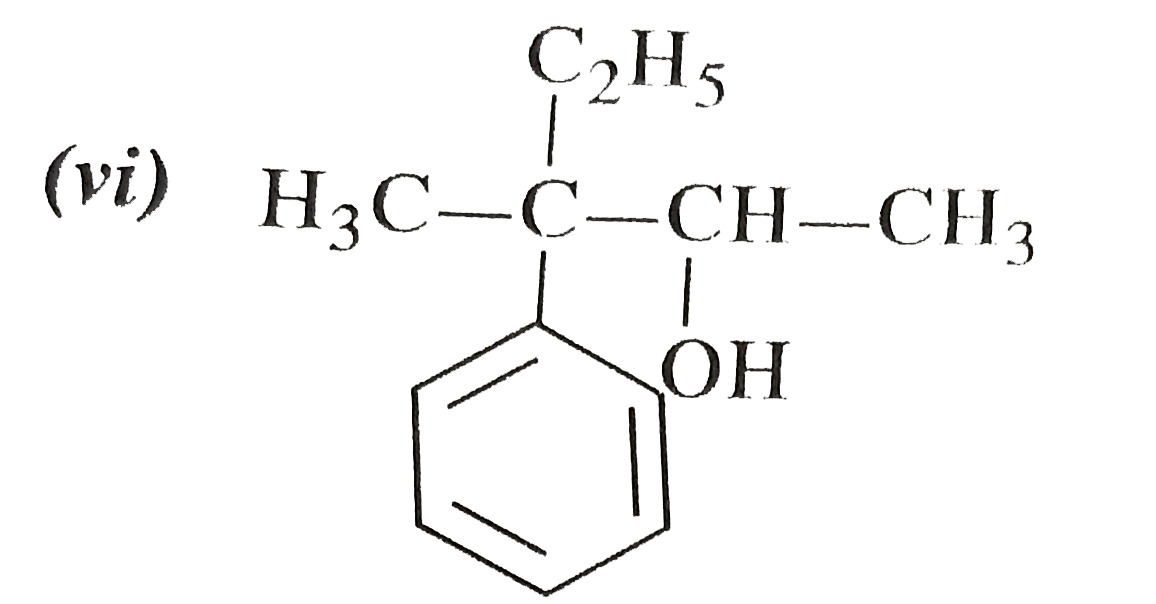CH3−BrLi−−→ACuI−−→BY−−→C
If C is CH3−CH2−(CH2)5−CH3 than what is Y.
To solve the problem, we need to determine what Y is in the reaction sequence given that C is CH₃−CH₂−(CH₂)₅−CH₃, which is octane (C₈H₁₈).
1. Identify the starting compound: The starting compound is CH₃Br (methyl bromide).
2. React with Lithium (Li): When CH₃Br is treated with lithium, it forms an organolithium compound. The reaction can be represented as:
\(
CH₃Br + Li \rightarrow CH₃Li + LiBr
\)
Here, CH₃Li is compound A.
3. React with Copper(I) Iodide (CuI): The next step involves reacting the organolithium compound CH₃Li with copper(I) iodide. This reaction produces a Gilman reagent (organocopper compound):
\(
2 CH₃Li + CuI \rightarrow (CH₃)₂Cu + LiI
\)
Here, (CH₃)₂Cu is compound B.
4. Determine the final product (C): The final product C is given as CH₃−CH₂−(CH₂)₅−CH₃, which is octane (C₈H₁₈).
5. Identify the required reaction: To convert compound B into compound C, we need to react the Gilman reagent (CH₃)₂Cu with an alkyl halide (Y) that has a 7-carbon chain. This is because the Gilman reagent will add a CH₃ group to the 7-carbon chain to form an 8-carbon chain (octane).
6. Determine Y: The alkyl halide Y must be CH₃−CH₂−(CH₂)₅−X where X is a halogen (like Br or Cl). The structure of Y will be CH₃−CH₂−CH₂−CH₂−CH₂−CH₂−CH₂−X, which corresponds to heptyl halide (C₇H₁₄X).
Thus, Y is CH₃−CH₂−CH₂−CH₂−CH₂−CH₂−CH₂−X (heptyl halide).
Final Answer:
Y is CH₃−CH₂−CH₂−CH₂−CH₂−CH₂−CH₂−X, where X is a halogen (like Br or Cl).
\(
CH₃Br + Li \rightarrow CH₃Li + LiBr
\)
Here, CH₃Li is compound A.
\(
2 CH₃Li + CuI \rightarrow (CH₃)₂Cu + LiI
\)
Here, (CH₃)₂Cu is compound B.
Y is CH₃−CH₂−CH₂−CH₂−CH₂−CH₂−CH₂−X, where X is a halogen (like Br or Cl).
Topper's Solved these Questions
- HYDROCARBON BOOK - MOTIONCHAPTER - HYDROCARBON EXERCISE - QUESTIONS
6 Videos
- HYDROCARBON BOOK - MOTIONCHAPTER - HYDROCARBON EXERCISE - Exercise - 1
85 Videos
- GRIGNARD REAGENTBOOK - MOTIONCHAPTER - GRIGNARD REAGENTEXERCISE - EXERCISE-2
16 Videos
- IONIC EQUILIBRUIMBOOK - MOTIONCHAPTER - IONIC EQUILIBRUIMEXERCISE - Exercise -4 (Level -II)
14 Videos
Similar Questions
Give the structures of A, B and C in the following reactions:
(i) CH3CH2INaCN−−−→AOH−−−−−−−−−−−→Partial h ydrolysisBNaOH+Br2−−−−−−−→C
(ii) C6H5N2ClCuCN−−−→AH2O/H+−−−−−→BNH3−−→ΔC
(iii) CH3CH2BrKCN−−→ALiAlH4−−−→BHNO2−−−→0∘CC
(iv) C6H5NO2Fe/HCl−−−−→ANaNO2+HCl−−−−−−−−→273KBH2O/H+−−−−−→ΔC
(v) CH3COOHNH3−−→ΔANaOBr−−−→BNaNO2/HCl−−−−−−−→C
(vi) C6H5NO2Fe/HCl−−−−→AHNO2−−−→273KBC6H5OH−−−−→C
View SolutionGive the IUPAC names of the following compounds:
(i)C6H5−CH2−CH2−OH (ii)CH3−CH3∣C∣CH3−CH2−CH2−OH
(iii)[(CH3)2CH]3COH. (iv)CH3−CH∣OH−CH2−CH2−O−CH2CH3
(v)CH3−CH2−CH∣Cl−CH∣CH3−CH3∣C∣OH−CH3 (vi)
(vii)(CH3)3COH (viii)CH3−CH∣CH3−CH∣OH−CH2−CH∣CH3−CH3
(ix) CH2OH |CH2−CH2−CH−CH−CH−CH3 | | CH2Cl CH3, (x) CH3−C=C−CH2OH | | CH3Br
(xi) CH2=CH−CH∣OH−CH2−CH3, (xii) CH2OH |CH3−CH−CH2−CH−CH−CH3 | | CH3 OH
View Solution
Knowledge Check
CH3CH2BrMg/Et2O−−−−−→ACO2−−→H2O+−−−→B, Porduct B is
ACH3−CH2−CH2OHBCH3−CH2−CHOCCH3−CH2−COOHDCH3−CH2−CH3CH3−C≡CHdilH2SO4−−−−−→Hg2+CH3−OH∣C−CH2(X)↔CH3−O∣C−CH3(Y)
By what phenomenon X converts into Y.AIsomerisationBAromatisationCTautomerismDMetamerism.The relative stability of the compunda given below is in the order
CH3−CH3∣C=CH3∣C−CH3
CH3−CH3∣C=CH−CH3
CH3−CH=CH2
CH2=CH2AI>II>III>IVBIV>III>II>ICI>III>II>IVDII>I>IV>III
Complete the following reactions
(i) CH3−O∣∣C−CH3CH3MgBr−−−−−→ether(dry)AH3O+−−−→B (ii) CH3−CH2−CH2−CHONi/H2−−−→A
View SolutionWhat is the nature of carbon atom marked with asterisk (*) sign in the following compounds?
(a) CH3−CH3∣C∣CH3−CH3
(b) H−CH3∣C∣CH3−CH2CH3
( c) CH3−CH2−CH2−CH3 (d) CH3−CH2−CH2−CH3
View SolutionWrite the IUPAC name of CH3CH(CH3)CH2C(CH3)2COCH3
View SolutionIn the reaction
CH3COOHLiAlH4−−−→APCl4−−→BAlc.KON−−−−−→C
The product C is
View SolutionThe correct IUPAC name of CH3CH2CH(CH3)CH(C2H5)2 is
View Solution
